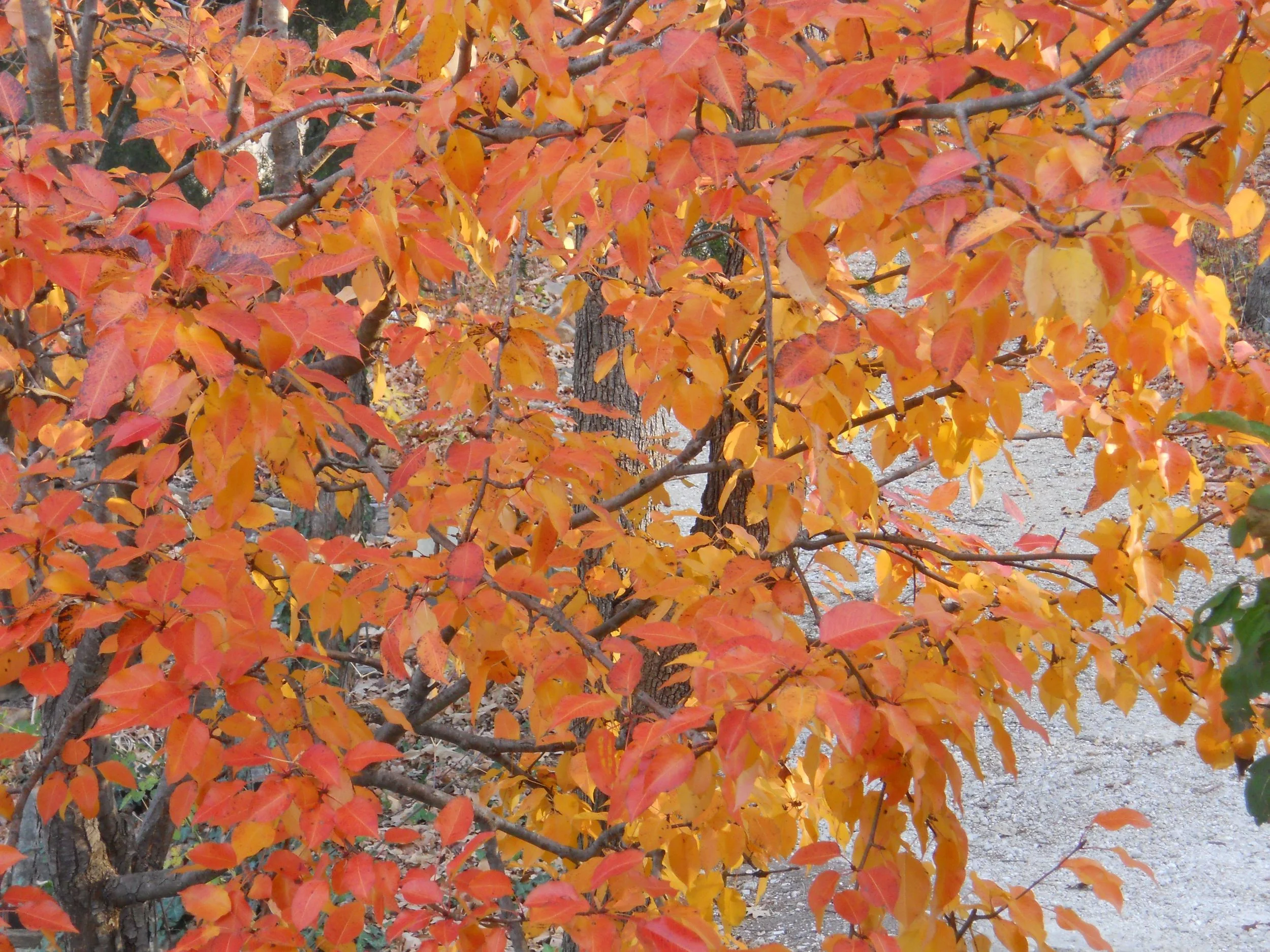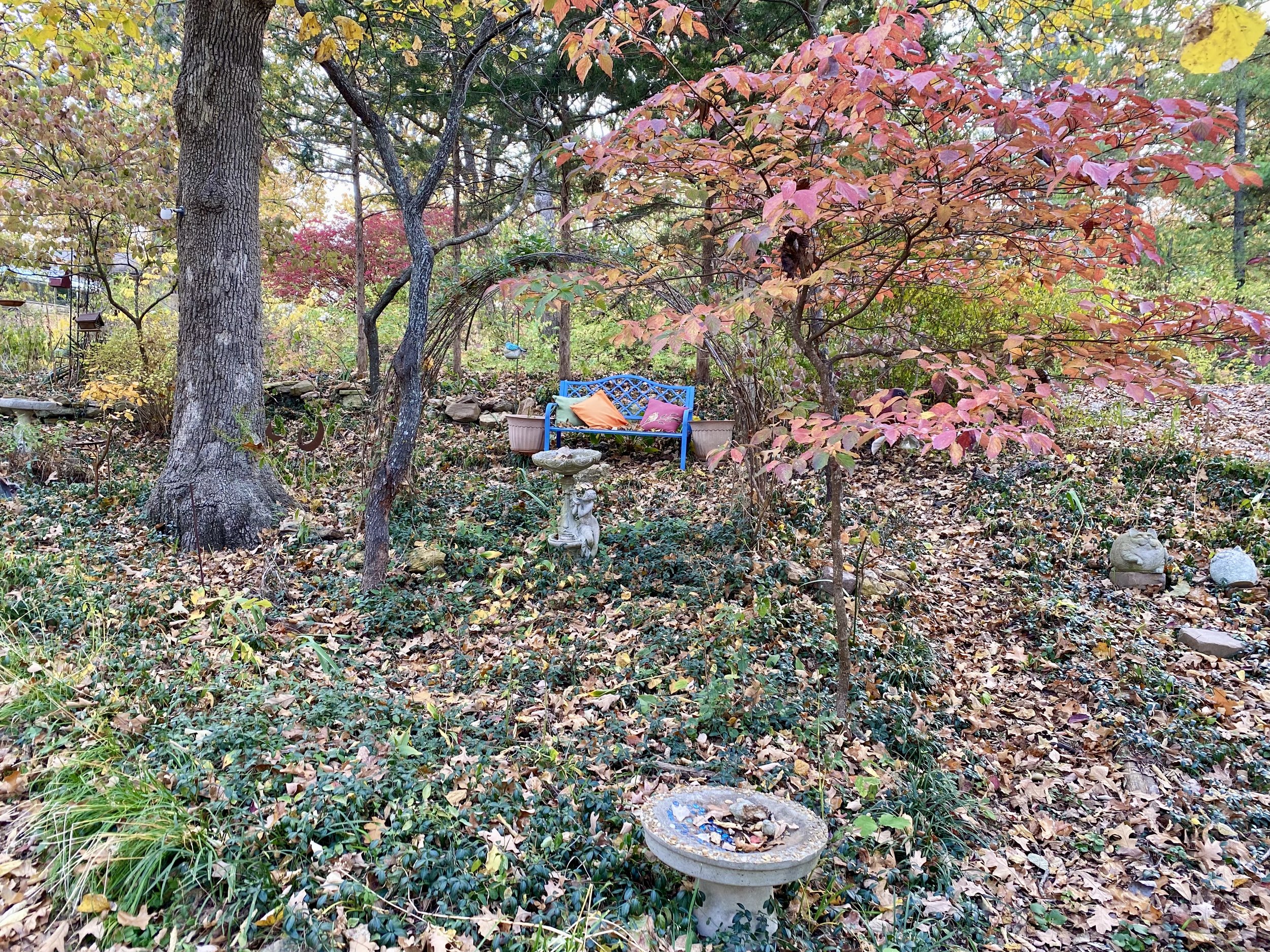Favorite Trees Fall Leaf Color
/missouri’s state tree flowering dogwood turns reddish peach in fall. (charlotte ekker wiggins photo)
Favorite Trees Fall Leaf Color
We've been in a late summer drought where I live in mid-Missouri so leaf drop is in part because trees are parched. It's also because we are heading into fall and as temperatures drop, plants are settling into a slower season.
Trees change color in the fall due to a combination of factors, including shorter days, cooler temperatures, and less sunlight. As the days get shorter, trees begin to produce less chlorophyll, the green pigment that allows them to absorb sunlight and photosynthesize. As chlorophyll levels decrease, the other pigments in the leaves, such as carotenoids and anthocyanins, become more visible.
Carotenoids are yellow, orange, and brown pigments that are present in leaves throughout the growing season. However, they are masked by the green chlorophyll.
In fall, as chlorophyll breaks down, the carotenoids become more visible, giving leaves their yellow and orange hues.
Anthocyanins are red, purple, and blue pigments that are produced in leaves in response to cool temperatures, bright light, and stress. As the weather cools in fall and the days get shorter, trees produce more anthocyanins. This gives leaves their striking red, purple, and crimson colors.
If you live in an area without seasons, you're missing this color change in the landscape which can be very dramatic. I love watching the changes in the seasons.
Here are 9 examples of favorite trees and the colors their leaves turn:
Sugar maple: Red, orange, and yellow
Red maple: Red, orange, and purple
Oak: Red, orange, brown, and yellow
Hickory: Yellow, orange, and brown
Ash: Yellow, orange, and purple
Birch: Yellow, orange, and red
Sweetgum: Red, orange, and yellow
Dogwood: Red, purple, and yellow
Sassafras: Yellow, orange, and red
Fall foliage is a beautiful reminder of the changing seasons. It is also a sign that trees are preparing for winter so hopefully you are, too.
For more tips on gardening, beekeeping, cooking and easy home decor, subscribe to my weekly Garden Notes.
Charlotte













